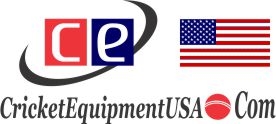Close
- Cricket Bats
- Batting Gloves
- Batting Pads
- Shoes
- Balls
- Kids
- Cricket Bats
- Cricket Balls
- Cricket Batting Gloves
- Cricket Batting Pads
- Arm & Thigh Guards
- Cricket Helmets
- Wickets and Stumps
- Cricket Shoes
- Cricket Apparel
- Wicketkeeping Gear
- Cricket Sets Kids
- Kids Cricket Gear
- Cricket Accessories
- Left Hander's Corner
- Cricket Kit Bags
- Cricket Bat Grips
- On Sale
Menu
- Cricket Bats
- Batting Gloves
- Batting Pads
- Shoes
- Balls
- Kids
- Cricket Bats
- Cricket Balls
- Cricket Batting Gloves
- Cricket Batting Pads
- Arm & Thigh Guards
- Cricket Helmets
- Wickets and Stumps
- Cricket Shoes
- Cricket Apparel
- Wicketkeeping Gear
- Cricket Sets Kids
- Kids Cricket Gear
- Cricket Accessories
- Left Hander's Corner
- Cricket Kit Bags
- Cricket Bat Grips
- On Sale
(0)
items
You have no items in your shopping cart.
All Categories
Menu
Shopping Cart - Free Shipping Over $150 in USA
Filters
Personal menu
Preferences
Search
This store is currently closed
Please check back in a little while.
Information
- Cricket Explained - A Guide
- Cricket Facts
- Cricket Bat Sizes
- Willow Grading
- Cricket Quotes
- Cricket Terminology
- Heavy Tennis Ball Cricket Bats
- Helmets and Clothing Sizes
- Cricket World Cup ODI's History
- Choosing a Right Cricket Bat
- Cricket Gear Buying Guide
- Let’s learn in's and out's of the cricket balls!
- Cricket Equipment
- Cricket Tips
- Cricket Bats Specifications - Recent Changes to the Law
- Cricket History
Customer service
My account
Store Address
- 510 Pike Park Drive, Suite D, Lawrenceville Georgia 30046
- info@cricketequipmentusa.com
- 123-456-789
Copyright © 2025 Cricket Equipment USA. All rights reserved. Other Sports Sites Field Hockey: Field Hockey Sticks USA Soccer: Best Soccer Buys














